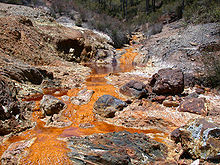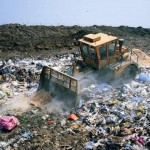This technology prevents huge amounts of carbon from being released into the atmosphere. See Global Climate Change
The materials used to make the Collectors can be considered pollutants when they are discarded or recycled. The collectors are made out of the following Materials
Copper and Aluminum – These metals are often used on the flat plates and as the tubes in the collectors. Mining these metals has environmental impacts such as destroying the structure of the area. It also pollutes the surrounding water with metals
Copper – Copper is the most highly recycled metal in the country. Mining and refining it release harmful gasses, such as Sulfur Dioxide, however Recycling it releases much less.
Aluminum – “Recycling aluminum requires only five percent of the energy required to manufacture new aluminum from bauxite. However, recycling aluminum produces many toxic chemicals that are released into the air. Furthermore, recycling aluminum produces a waste product called “dross” that is highly toxic and has to be buried in landfills. This dross must be tightly sealed in containers so that it doesn’t leak out and enter groundwater.”

Glass – Glass is often used as an insulator material to cover the metal tubes. Producing glass does not emit much waste, however it uses a lot of energy. It requires extremely high temperatures which are achieved by burning a fuel and this emits greenhouse gasses.
Plastic (polypropylene) – This is often used in flat plate collectors to reduce the cost. It is a number 5 recyclable plastic. Compared to other plastics it does not produce much CO2 when being manufactured or when being disposed of. It also does not release any toxic chemicals when being disposed of.
Propylene Glycol – This is often mixed with water and used as a Transmission Fluid. If this leaks out of the system or is disposed of it could end up in our water which could have negative impacts. This chemical exerts a high biochemical oxygen demand on water. This means that it robs large quantities of oxygen from the surrounding area. This can have seriously negative impacts on aquatic life. It is not very toxic to humans.
It can be justified to use this material in order to make this technology more accessible to lower income families. Especially if those families would otherwise use electricity or other polluting technologies.
Authored by: Sean Murphy
Edited by: Sam Brinton
Heya excellent website! Does running a blog
like this require a lot of work? I have virtually no
understanding of computer programming however I had been hoping to start my own blog in the near future.
Anyhow, should you have any ideas or techniques for new blog owners please
share. I understand this is off topic but I just had to ask.
Kudos!